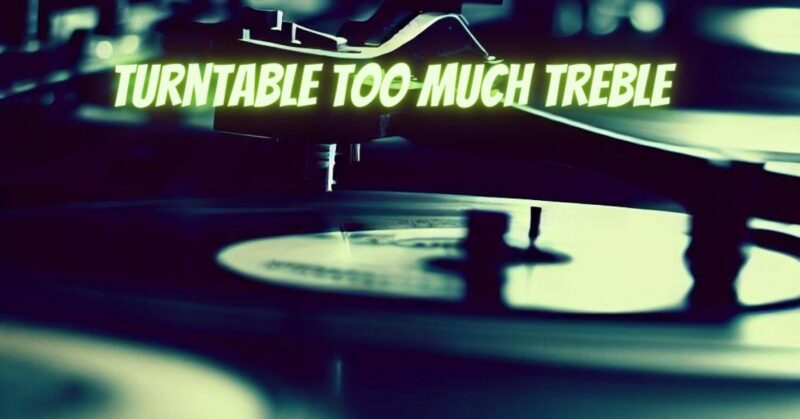If you find that your turntable produces excessive treble or lacks a balanced sound, it can affect your listening experience and make the music sound harsh or unappealing. Fortunately, there are several adjustments and techniques you can employ to address this issue and achieve a more balanced audio output from your turntable. In this article, we will explore some possible causes of excessive treble and provide tips for adjusting the sound to achieve a more pleasing and well-rounded listening experience.
- Check Equalization Settings:
Ensure that the equalization settings on your turntable are correctly configured for the type of record you’re playing. Different records require specific equalization curves to achieve optimal sound reproduction. The most common equalization curves are the RIAA curve for modern vinyl records and the various pre-RIAA curves for vintage or specialty records. Verify that your turntable is set to the appropriate equalization setting to ensure balanced frequency response.
- Evaluate Cartridge and Stylus:
The cartridge and stylus on your turntable play a significant role in reproducing the audio signal accurately. An improperly aligned or worn-out stylus can contribute to excessive treble or unbalanced sound. Consider checking the alignment and condition of your cartridge and stylus. If necessary, align or replace them following the manufacturer’s instructions or seek assistance from an expert to ensure optimal performance.
- Adjust Tonearm Tracking Force:
The tracking force of your turntable’s tonearm affects the contact between the stylus and the record’s grooves. Too light or too heavy tracking force can result in imbalanced sound, including excessive treble. Consult your turntable’s manual or specifications to determine the recommended tracking force range for your cartridge, and adjust it accordingly using a tracking force gauge.
- Evaluate Room Acoustics:
The acoustic properties of your listening environment can impact the perceived treble response. Reflective surfaces, bare walls, and untreated rooms can contribute to excessive treble or unwanted reflections. Consider adding acoustic treatments such as curtains, carpets, or acoustic panels to help absorb and diffuse sound reflections, creating a more balanced listening environment.
- Speaker Placement and Configuration:
The placement and configuration of your speakers can influence treble reproduction. Experiment with speaker placement, ensuring they are positioned at an appropriate height and angle, and not too close to walls or corners. Additionally, check your speaker’s settings and make adjustments to the treble levels if possible. Finding the right balance between the speakers and the turntable can significantly impact the overall sound quality.
- Use Tone Controls:
If your turntable or amplifier includes tone control options, such as treble adjustment, utilize them to fine-tune the sound to your liking. Incrementally adjust the treble settings until you achieve a balanced sound that is neither too bright nor too dull. Remember to make subtle adjustments to avoid compromising the overall tonal balance.
Conclusion:
Addressing excessive treble on your turntable requires a combination of adjustments and considerations. Check the equalization settings, evaluate the cartridge and stylus condition, adjust the tonearm tracking force, optimize room acoustics, and fine-tune speaker placement and configuration. By implementing these tips, you can achieve a more balanced and pleasing sound from your turntable, allowing you to fully enjoy your vinyl collection with improved treble response and overall audio quality.


